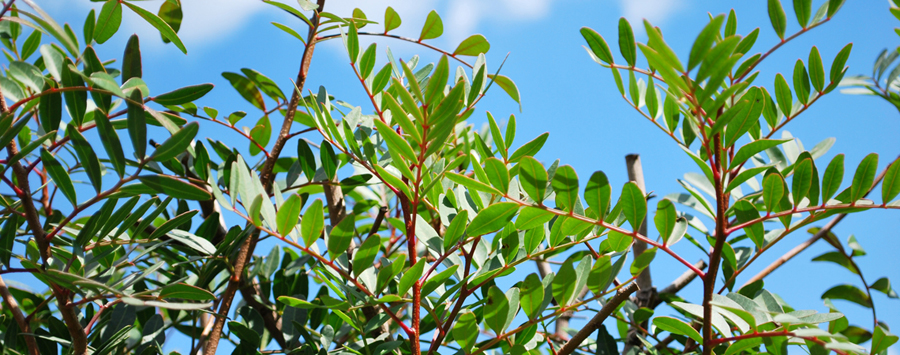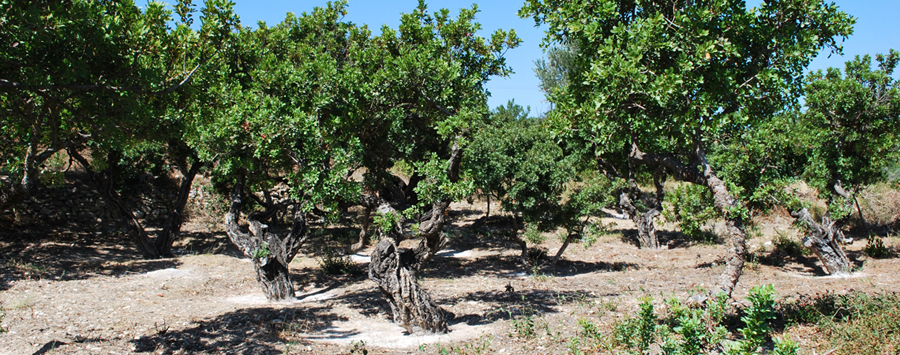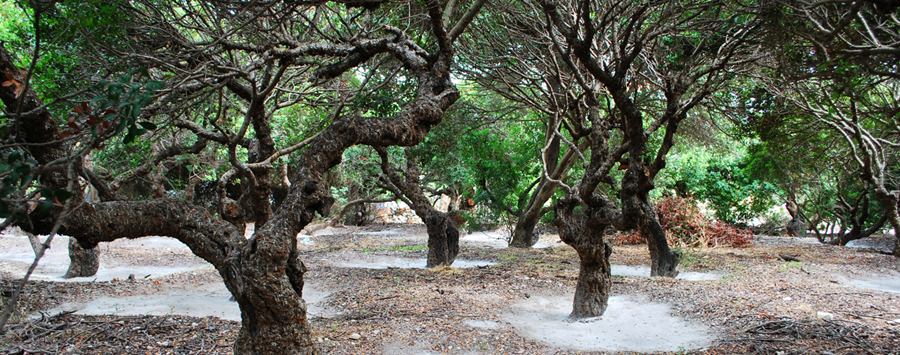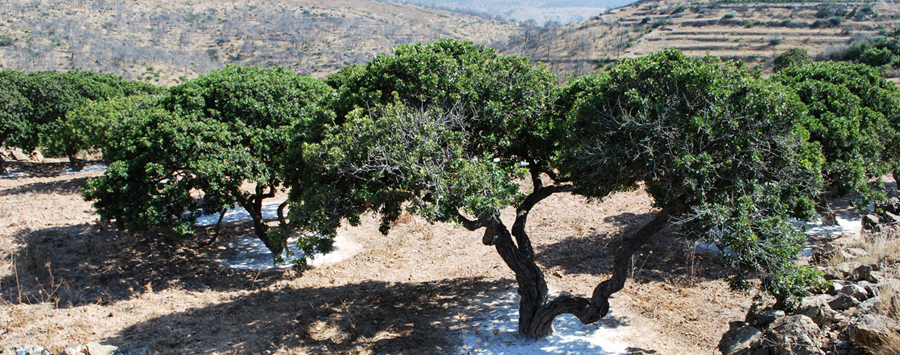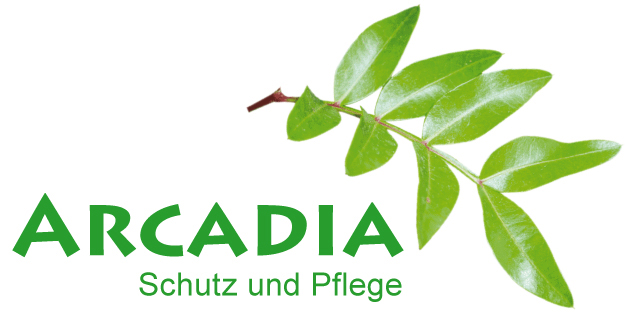
Mastic gum – precious tears. The story of Mastic gum.
Mastic is a precious resin, harvested only on the Greek island Chios.
The people of the Mediterranean region, where it is used to help prevent bad breath (halitosis) and tooth decay, have always valued it as a natural method of keeping the gums and teeth healthy.
Mastic gum is the resin of the small tree Pistacia lentiscus. It is harvested in only one place in the world, the Greek island of Chios in the Aegean Sea. It is only here that its farmers have succeeded in cultivating this temperamental and sensitive plant to the point where it is possible to extract the precious "Mastic tears". Cultivating the trees requires expert knowledge. It is a lengthy and complicated process which cannot be hurried; fertiliser cannot be used on Mastic gum trees and the resin can only be harvested by hand, itself no easy task.
Resin was known as an especially precious substance in Biblical times. In the Old Testament (Genesis 43:11) Israel is quoted as saying, "Take with you the best products of your country, pack them in your baggage and bring them to the man as a gift; take some Mastic gum, some honey, tragacanth [another type of resin] and laudanum, pistachios and almonds." The healing properties of Mastic gum were already well known to the ancient world; famous doctors prescribed it for toothache and digestive problems, and according to Adam Lonitzer, writing in 1630, even for coughs. In classical Greece and Rome Mastic gum was used as a medicinal chewing gum for its antiseptic properties and to strengthen the gums. The Mastic gum tree was called the "toothpick tree", as its hard wood was used to make these implements. Mastic gum was already a unique commodity 2000 years ago, and was correspondingly traded as a popular and expensive product.
The history of Chios is a good example of the resin´s desirability. From the Middle Ages onwards, as the ownership of the island passed from Venice to Genoa, it developed into an important and wealthy trading city. Trade led to an increase in population, while the growth of Chios as an economic force resulted in affluence and political clout. The value of Mastic gum is shown by the hard penalties that were exacted on anyone who stole or smuggled it, especially during the period of Genoese rule. If large quantities of the resin were found on someone and deemed to be stolen, the unfortunate man or woman could even be condemned to death. During harvest time the farmers were subject to close surveillance, and at night the gates of the city were shut so that not one precious Mastic gum tear could be abducted. Christopher Columbus himself visited the island of Chios and encountered the Mastic gum tree in around 1470.
But Mastic gum was not only of interest to the natives of Chios and sailors. Even the ladies of the Sultan of Constantinople´s harem valued it, for it kept their teeth healthy and gave them sweet-smelling breath. The Sultan already owned some of the larger islands in the Aegean at this period, but Chios, land of the Mastic gum tears, did not lie in his territory, meaning that he had to pay a great deal of money for the expensive product. Thus in 1566, he forced Genoa to hand over the island to him.
During the Greek war of independence (1821-1829), the Mastic gum villages or mastichochória were at first protected under the Sultan´s orders. But in 1822, the fateful "massacre of Chios" took place, immortalised in 1824 in the "Szène des massacres de Scio" by the famous painter, Eugène Delacroix; the painting is displayed today in the galleries of the Louvre in Paris. In 1912, Chios was conquered by Greek soldiers, and in the contract signed in London in the same year, the Ottoman Empire recognised Chios as part of the kingdom of Greece. At the beginning of the twentieth century medical science became more interested in Mastic gum, and it could be found in a number of pharmacopeias as an officially recognised remedy. But over time, it vanished from the books, finally being removed even from the Swiss pharmacopeias, where it had held on for longest. Until the mid-twentieth century it continued to be used as a component of temporary tooth fillings.
A study carried out at the University of Salonica in 1980 awakened a new interest in the resin amongst researchers. The study found that Mastic gum can reduce plaque. Further international studies confirmed traditional beliefs about the many healing properties of Mastic gum, proving, for example, that Mastic gum does in fact act to help prevent infection and to slow down bacterial growth. Oral and stomach microflora react entirely positively to Mastic gum, meaning that even destructive bacteria are reduced if it is used regularly.
Today, this high-end product from the Orient is used in many different ways, from toothpaste, mouthwash and perfume to the production of expensive varnishes. A large proportion of Mastic gum is used to make Turkish chewing gum.
This means that demand for Mastic gum has grown steadily over the past centuries, leading to a corresponding increase in the number of Mastic gum trees; there are now around two million on Chios, the equivalent of 200 tonnes of Mastic gum harvested each year. Today the market rate for a kilogramme of tears is 140 euros.


